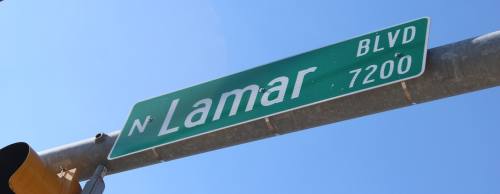After nearly four hours of debate, Austin City Council voted just before 2 a.m. on June 24 to support a $720 million transportation bond referendum likely to go before voters Nov. 8.
The 8-3 vote—with council members Ora Houston, Delia Garza and Ann Kitchen voting no—moves forward on pursuing a $720 million bond in 2016. Council will still need to set the ballot language and approve placing it on the Nov. 8 ballot at an early August meeting.
Mayor Steve Adler said the dollar amount supports what he has heard from community members and leaders to “go big.” He stressed that the bond will not fix everything.
“If we do this right at the same time we’re doing MoPac and [US] 183 and I-35, we can actually change the trajectory of the city, but it’s going to take stepping up and doing that,” he said.
Garza and Kitchen expressed disappointment with the process.
“I don’t think it has been transparent,” Garza said. “I haven’t heard from constituents in my district. In fact I’ve heard they won’t support $720 million.”
Kitchen, who attempted to make her own motion to provide funding more equitably throughout the city, said she could not support the final motion.
“I’m very disappointed my colleagues didn’t hear what I was trying to say," she said. "I can’t support this. My constituents asked me to try to make some changes, and I wasn’t successful."

The approved $720 million transportation bond would include funding for both regional and local projects as well implementing corridor plans.[/caption]
$720 million bond package
To pay for the $720 million bond package, the city would issue $250 million in general obligation bonds under the city’s existing bond capacity and issue another $470 million by raising the debt tax rate by about 2.25 cents. This would leave $250 million of bond capacity for future needs, such as parks, libraries and other transportation projects.
The increased tax rate would be phased in over multiple years, and the increase would equate to almost a $5 per month increase for a median household, Mayor Steve Adler said.
“As I go around and talk to people all over city of all economic levels, people want the city to do something and recognize it comes with some investment,” Adler said.
The cornerstone of the $720 million bond package would be $482 million for the mayor’s smart corridors to implement existing corridor plans on North and South Lamar Boulevard, Burnet Road, Airport Boulevard, East Martin Luther King Jr. Boulevard, East Riverside Drive and Guadalupe Street.
An amendment by Adler attempts to provide more funding for South Austin by adding a corridor from South Austin, such as Slaughter Lane, Brodie Lane, Manchaca Road, FM 1626, William Cannon Drive and South Congress Avenue.
However, Kitchen said that language would not allow the city to find the greatest need to fund.
“It limits the four districts in South Austin to one more, and it doesn’t base it on need,” she said.
Regional mobility projects “to address congestion and enhance safety” would receive $101 million. This money could go toward Loop 360, Spicewood Springs Road, Oak Hill Parkway, Anderson Mill Road, Parmer Lane, and the intersection of RM 2222 and RM 620.
About $30 million would go toward the Urban Trails Master Plan, $20 million for the Bicycle Master Plan, $15 million for implementing the Vision Zero Master Plan that aims to achieve zero traffic deaths and $17 million for improving substandard streets.
Adler’s motion also set aside about $55 million for the Sidewalk Master Plan, and council also voted 7-2, with Garza and District 1 Council Member Ora Houston abstaining, on an amendment to split that amount between the sidewalk plan and the city’s Safe Routes to School program. Each district would receive an equal amount of about $2.75 million.
District 10 Council Member Sheri Gallo brought forth the amendment because she said the sidewalk plan uses proximity to transit as its top criteria for determining where sidewalks would go. She said in her district, most of the area west of Loop 360 would not be considered a priority because there is no transit.
“I’m really focused on the safety of our children as they travel to and from school,” she said.
 The approved $720 million transportation bond would include funding for both regional and local projects as well implementing corridor plans.[/caption]
The approved $720 million transportation bond would include funding for both regional and local projects as well implementing corridor plans.[/caption]





